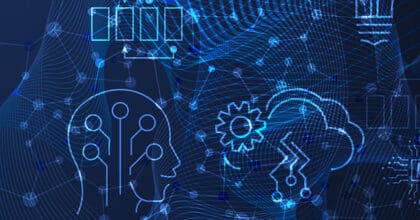70% of US consumers are worried about being hacked.
Security hacks are so common that they seem almost banal when they show up in the news these days. Controversies abound; the story surrounding Cambridge Analytica’s usage of millions of people’s Facebook data rages on. Recent events like these are forcing consumers to become cognizant of the digital data they produce, as well as how it’s being collected and used. Mintel’s US research on attitudes toward technology shows that most (70%) of US consumers are worried about being hacked. As a result, many are hungry for more secure measures when it comes to accessing digital platforms.
The Mintel Trend ‘Body Language’ explores how biometric technology is one increasingly common solution. Tech that scans fingerprints, palms, faces, voices, eyes, and more can analyze these physical and behavioral characteristics and provide secure and instant access to information, locations, products, and services. Biometrics are not completely new, but consumers are quickly becoming more aware of – and more comfortable with – the technology and its accompanying advantages.
The most widely known benefit is device and account security, thanks in large part to Apple’s use of facial recognition to securely unlock its iPhone X. Other companies are finding ways to use biometrics in auto, home security, banking, and beyond to give consumers much-desired peace of mind.
- Auto newcomer Byton recently introduced a concept car (to be produced beginning in 2019) that sees the driver abandoning keys in favor of facial recognition to unlock the doors.
- Some home security systems, such as the Nest Cam IQ, can recognize faces in order to tell users who’s in their house.
- Banks and payment companies around the world – Brazil’s Banco Neon, France’s Société Générale, UK’s TSB, and Bank of America, to name a few – are exploring authentication features that use selfies or fingerprints to verify identity. Argentina’s first 100% virtual bank, WANAP, takes security a step further by requiring users to wrinkle an eye or stick out their tongue to verify that they are alive.
The potential uses for biometrics, however, go far beyond device and account security. The technology is also being used by governments, for example, to identify individuals, keep people safe, and even catch criminals.
- The government in Austria is trialing a digital ID card that uses fingerprint checks for security and could one day replace passports.
- The Korea Transport Safety Authority has introduced a driver-monitoring system that uses face recognition technology to alert sleepy bus drivers in Seoul.
- Chinese police recently used facial recognition technology to find and arrest a crime suspect amid a concert crowd of 60,000 people. Authorities in China have also installed toilet paper dispensers outfitted with facial recognition technology in order to deter would-be thieves at Beijing’s Temple of Heaven.
As biometric technology becomes even more mainstream and consumer comfort levels with it rise, brands will find that they can use it to better understand people’s needs and serve them more effectively.
- Neutrogena’s SkinScanner is a dongle that attaches to an iPhone and connects to the brand’s Skin360 app. It scans and assesses skin, and helpfully recommends relevant skincare products.
- In travel and transportation, biometrics can streamline processes and alleviate points of friction. Airlines have taken a liking to facial recognition: JetBlue is testing it as a boarding pass replacement, Delta is verifying identity at bag-drop machines, and Brazilian airline GOL is speeding up check-in.
- Retail checkout processes are becoming speedier. Many personal devices already use fingerprint scans as a security measure, and now in-store shoppers at a Costcutter store in London can pay for their groceries using the veins in their fingertips in just three seconds.
- K PRO, a new restaurant concept launched by KFC in China, was the first commercial outlet to integrate Alibaba’s ‘Smile to Pay,’ which uses facial scans and other steps to verify customers’ identities and enable payments.
- Alibaba’s Tao Café, also in China, is an unmanned pop-up convenience store that uses computer vision, biometric recognition, and sensing technology to track consumers and their purchases.
It must be said, of course, that in order to earn and keep consumer trust, brands must remain transparent with consumers regarding data collection and usage. Because biometrics are somewhat of a nascent technology (more so in North America than in some other regions), consumers understandably have concerns entering this realm. Once they are aware of the tech’s potential benefits, however, they’re likely to appreciate the genuine utility of it.


































